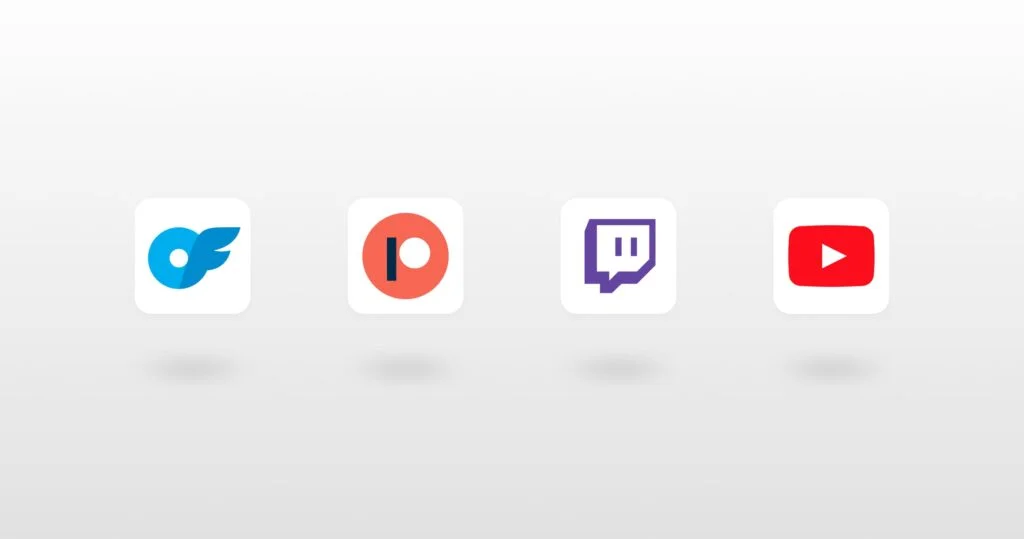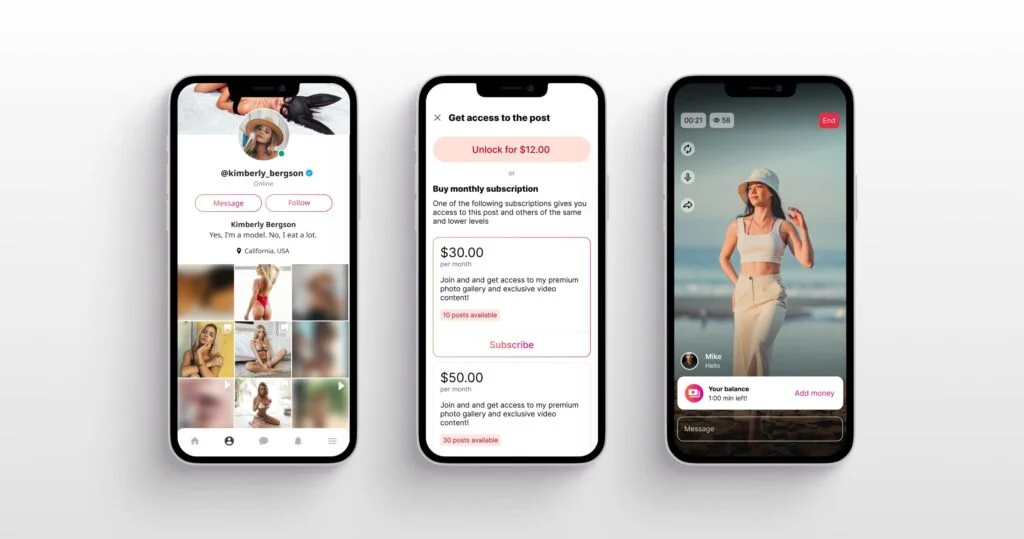Content Subscription Platforms: The Future of Content Monetization?
Explore the rise of content subscription platforms and their potential to revolutionize content monetization. Dive into popular examples, the benefits of starting your own platform like OnlyFans, and how to leverage Scrile Connect to create a thriving, customized content subscription experience for your audience.

Introduction
Content monetization has evolved significantly over the years, with digital creators exploring various methods to generate income from their work. One emerging trend is the rise of content subscription platforms, which allow creators to offer exclusive content and build a community of loyal subscribers. In this article, we will examine the development of content monetization, key membership site platforms such as OnlyFans and Patreon, the factors driving their growth, and the potential future of this monetization model for content creators.
The Evolution of Content Monetization
Traditional advertizing models
In the past, creators primarily relied on advertising revenue to monetize their content. This included display ads, video ads, and sponsored posts. However, as ad blockers became more prevalent and consumer preferences shifted, traditional advertising models started losing their effectiveness.
Affiliate marketing and sponsored content
To adapt, many creators began incorporating affiliate marketing and sponsored content into their monetization strategies. While these methods offered a more direct way to generate revenue, they were not always the best fit for all types of content or creators.
Pay-per-view and pay-per-download
Some creators found success with pay-per-view and pay-per-download models, which allowed them to charge users for access to specific content. This approach, however, often required significant promotional efforts and could be limiting in terms of building a dedicated audience.
Transition to subscription-based models
The limitations of previous monetization methods led to the emergence of content subscription platforms. These platforms provide creators with a more sustainable and predictable income stream by charging users a recurring fee for access to premium content.
Key Content Subscription & Subscription Ecommerce Platforms

Patreon
Patreon is a well-known content creator platform that allows creators to sell subscriptions online and offer various tiers of exclusive content and perks to subscribers. It has become popular among artists, podcasters, and other creators who value direct engagement with their audience.
Substack
Substack is primarily focused on writers and newsletter creators. It offers a platform where creators can publish content and sell subscriptions to monetize their work, enabling them to build a dedicated readership.
Medium
Medium is a hybrid platform that combines free articles with a subscription-based model. By joining the Medium Partner Program, creators can earn money from their articles based on the engagement they receive from subscription sales.
OnlyFans
OnlyFans is a content subscription platform with a focus on adult content, although it also hosts creators from various niches. It allows creators to set their subscription prices and get recurring payments for content and offer additional content through pay-per-view messages.
Twitch
A live streaming platform primarily focused on video games, but also catering to other content categories like music, art, and talk shows. Twitch enables creators to monetize their streams through subscription features, donations, and advertising.
YouTube Premium
A paid subscription service offered by YouTube that provides ad-free access to videos, background play, and access to YouTube Originals. Content creators can also offer channel memberships for additional perks and premium content.
Cratejoy
A marketplace and a popular subscription ecommerce platform for subscription box businesses that offers tools to design, launch, and manage subscription boxes.
Shopify
Shopify is one of the best subscription e-commerce platforms. With the help of subscription apps like ReCharge, Bold Subscriptions, and Subscriptions by PayWhirl, Shopify allows subscription management of products on their e-commerce stores.
Podia
Podia is an online membership site platform designed to help creators sell online courses and other digital products, such as digital downloads.
Kajabi
Kajabi is an all-in-one online platform designed to help creators and entrepreneurs build, market, and sell digital products and host online courses, membership sites, and coaching programs.
Each platform offers unique features that cater to the needs of specific content creators. Patreon and Substack, for example, provide extensive community-building tools to sell memberships and engage with subscribers, while OnlyFans offers a higher degree of privacy for its creators. However, drawbacks such as platform fees and content moderation challenges can impact the overall user experience.
Factors Driving the Growth of Membership Site Platforms

Consumer demand for ad-free experiences
One significant factor driving the growth of content subscription platforms is the increasing demand for ad-free content experiences. As users become more averse to intrusive ads, they are more willing to pay for exclusive, high-quality content.
Desire for exclusive, niche content
Subscribers are also drawn to membership site platforms because they offer access to exclusive, niche content that may not be available on other platforms or through traditional media.
Willingness to support creators directly
Many users appreciate the direct connection with creators that subscription platforms provide. This allows them to support their favorite creators financially, enabling them to produce more high-quality content.
Platform innovation and customization
The innovation and customization options offered by subscription services also contribute to their growth. Features like tiered subscription plans, personalized content, and community engagement tools make these platforms attractive to both creators and consumers.
Proliferation of digital payment options
The widespread availability of digital payment options has made it easier for users to subscribe to and pay for content on these platforms, further fueling their growth.
Challenges and Criticisms
A. Sustainability of subscription-based revenue
While content subscription platforms offer creators a more predictable revenue stream, the sustainability of this model remains a concern. As more creators adopt this approach, competition for subscribers could lead to diminishing returns.
B. Platform fees and revenue sharing
Critics argue that some platforms take a significant share of creators’ revenue through fees and revenue sharing, potentially limiting the benefits for creators.
C. Content exclusivity and accessibility
Content exclusivity can create accessibility issues, as users may not be able to afford multiple subscriptions to access content from various creators.
D. Competition among creators and platforms
The growing popularity of content subscription platforms has led to increased competition, making it more challenging for creators to stand out and gain subscribers.
E. Ethical concerns and content moderation
Content moderation on subscription platforms is another concern, as the presence of controversial content or creators can generate ethical debates and impact a platform’s reputation.
How to Start Your Own Content Subscription Business
Starting your own subscription business platform or online store for selling online courses or other digital products, involves several steps, from planning and development to launching and promoting.

Here’s a step-by-step guide to help you get started:
Define your niche and target audience: Identify the specific content area or niche you want to focus on and determine your target audience. This will help you create content that appeals to your audience and serves their needs effectively.
Plan your content strategy: Develop a content strategy that outlines the type of content you’ll create, the frequency of content updates, and any additional features, such as exclusive access, live streams, or community engagement.
Choose the right platform or tools: Select a ready platform or software solution that best fit your needs and preferences. There are several existing platforms (e.g., Patreon, Substack, Podia) and customizable software solutions (e.g., Scrile Connect, Memberful) to choose from. Consider factors such as subscription features, customization options, recurring payments, and payment processing when making your decision.
Design and develop your platform: If you’re using a customizable solution, design and develop your platform to align with your brand and content strategy. This may involve customizing templates, setting up pricing models, and integrating third-party tools or services.
Set up payment processing: Ensure your platform has a secure payment processing system in place, allowing subscribers to easily sign up and make payments to access exclusive content. Most platforms integrate with popular payment gateways like Stripe and PayPal.
Create a launch plan: Develop a launch plan that includes a timeline for releasing content, promotional efforts, and any special offers or incentives for early subscribers.
Promote your platform: Leverage social media, email marketing, blog posts, and collaborations with other creators to promote your content subscription platform and attract subscribers. Consider using paid advertising, influencer partnerships, and public relations efforts to boost visibility and reach.
Engage and retain subscribers: Build relationships with your subscribers through personalized communication, community features, and regular content updates. Encourage feedback, respond to comments and questions, and adjust your content strategy as needed to better serve your audience.
Monitor and analyze performance: Track key performance metrics, such as subscriber growth, retention, and revenue, to assess the success of your content subscription platform. Use these insights to refine your content strategy, promotional efforts, and overall approach.
Scale and expand: As your content subscription platform grows, consider expanding your content offerings, adding new features, or exploring partnerships with other creators or platforms to further increase your reach and recurring revenue.
Remember that building a successful content subscription platform takes time and dedication. Stay focused on creating valuable content and nurturing your subscriber community, and you’ll be well on your way to achieving your goals.
Advantages of Starting Your Own Subscription Based Platform
Complete control over content and monetization. By creating your own subscription ecommerce platform, you can tailor your monetization model to your specific needs and preferences, allowing for greater control over your revenue streams.
Building a unique brand and community. An independent membership community website also helps creators build a unique brand and community over a custom domain name, fostering stronger connections with subscribers and driving long-term success.
Customization and flexibility. An independent platfrom gives you more freedom and opportunities to add new features and improve your wesbite based on your needs.
Scrile Connect is a platform that enables creators to launch their own membership websites providing greater control over their content and monetization strategies. It provides a suite of features and tools designed to help creators build, launch, and manage their own content subscription platforms.
Built-in monetization tools of Scrile Connect include:
paid membership and monthly subscription tiers
PPV content
paid messaging
live streams with tipping
audio and video calls on pay-per-minute basis
Scrile Connect privides a quick integration with payment gateway to get payments from subscribers directly to your merchant account. It also has the most advanced features for promotion like affiliate program, email marketing, etc.
Scrile Connect provides analytics and reporting features to help you track key performance metrics, such as subscriber growth, retention, and revenue. Use these insights to refine your content strategy, promotional efforts, and overall approach.

Impact on Traditional Media and Advertising
As content subscription platforms grow in popularity, traditional media faces declining ad revenues, forcing them to adapt their monetization strategies.
Some traditional media outlets have shifted their focus to subscription-based models to counteract declining ad revenues and cater to consumer preferences for ad-free content.
Despite the growth of content subscription platforms, advertising remains an important aspect of content monetization. However, its role is evolving, with a greater emphasis on targeted and non-intrusive ads.
There is potential for collaboration between traditional media outlets and content subscription platforms, as they can leverage each other’s strengths to offer a more comprehensive and engaging content experience for users.
The Future of Content Monetization
As the demand for exclusive, ad-free content continues to rise, content subscription platforms are expected to further grow and evolve, offering more tailored solutions for creators and consumers alike.

Emerging trends and technologies
Micro-subscriptions and pay-per-article models may gain popularity, offering users more flexibility in accessing content.
Blockchain and decentralized content platforms could reshape the content monetization landscape, offering creators more control over their content and revenue.
Integration of AI and machine learning in content creation may play a more prominent role in content creation, helping creators optimize their content and monetization strategies based on data-driven insights.
These emerging trends and technologies will likely have far-reaching implications for content creators, consumers, and the overall industry, driving further innovation and growth in content monetization.
Conclusion
In conclusion, content subscription platforms represent a significant shift in the way creators monetize their content, offering a more sustainable, predictable income stream. While challenges and criticisms persist, the growing popularity of these platforms indicates that they will likely play a major role in the future of content monetization.
With tools like Scrile Connect, creators have the opportunity to build their own subscription platforms, further expanding the potential for success in this evolving landscape. As the industry continues to develop and adapt, content creators and consumers alike will need to stay informed and engaged to thrive in this new era of content monetization.
